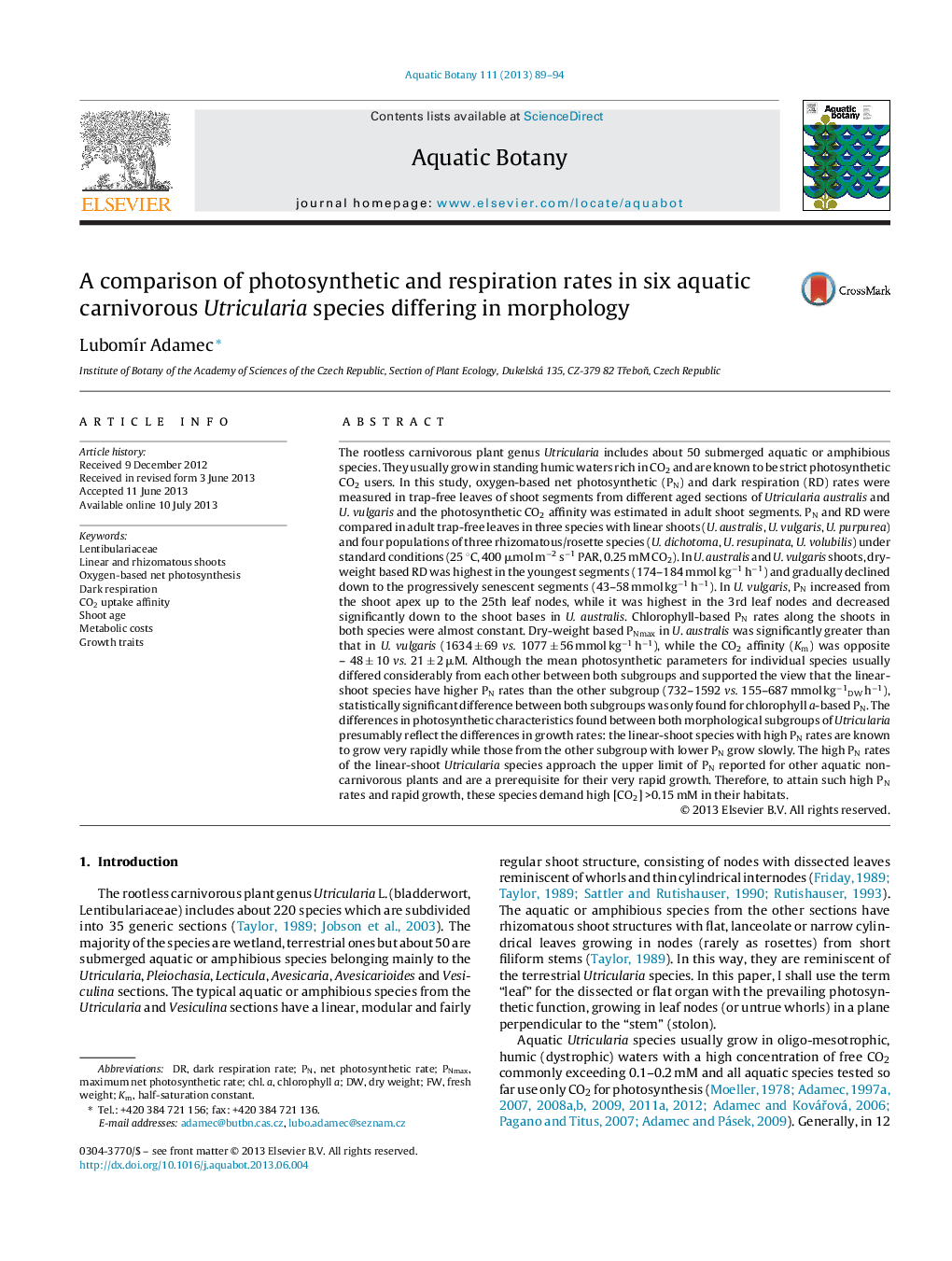| کد مقاله | کد نشریه | سال انتشار | مقاله انگلیسی | نسخه تمام متن |
|---|---|---|---|---|
| 4527852 | 1625831 | 2013 | 6 صفحه PDF | دانلود رایگان |

• Net photosynthetic and dark respiration rates were measured in aquatic Utricularia.
• Linear-shoot species were compared with rhizomatous/rosette amphibious species.
• The former group has greater PN rates correlating with shoot growth rates.
• These PN rates represent an upper limit reported for other aquatic plants.
• High PN rates are a prerequisite for very rapid growth of aquatic Utricularia.
The rootless carnivorous plant genus Utricularia includes about 50 submerged aquatic or amphibious species. They usually grow in standing humic waters rich in CO2 and are known to be strict photosynthetic CO2 users. In this study, oxygen-based net photosynthetic (PN) and dark respiration (RD) rates were measured in trap-free leaves of shoot segments from different aged sections of Utricularia australis and U. vulgaris and the photosynthetic CO2 affinity was estimated in adult shoot segments. PN and RD were compared in adult trap-free leaves in three species with linear shoots (U. australis, U. vulgaris, U. purpurea) and four populations of three rhizomatous/rosette species (U. dichotoma, U. resupinata, U. volubilis) under standard conditions (25 °C, 400 μmol m−2 s−1 PAR, 0.25 mM CO2). In U. australis and U. vulgaris shoots, dry-weight based RD was highest in the youngest segments (174–184 mmol kg−1 h−1) and gradually declined down to the progressively senescent segments (43–58 mmol kg−1 h−1). In U. vulgaris, PN increased from the shoot apex up to the 25th leaf nodes, while it was highest in the 3rd leaf nodes and decreased significantly down to the shoot bases in U. australis. Chlorophyll-based PN rates along the shoots in both species were almost constant. Dry-weight based PNmax in U. australis was significantly greater than that in U. vulgaris (1634 ± 69 vs. 1077 ± 56 mmol kg−1 h−1), while the CO2 affinity (Km) was opposite – 48 ± 10 vs. 21 ± 2 μM. Although the mean photosynthetic parameters for individual species usually differed considerably from each other between both subgroups and supported the view that the linear-shoot species have higher PN rates than the other subgroup (732–1592 vs. 155–687 mmol kg−1DW h−1), statistically significant difference between both subgroups was only found for chlorophyll a-based PN. The differences in photosynthetic characteristics found between both morphological subgroups of Utricularia presumably reflect the differences in growth rates: the linear-shoot species with high PN rates are known to grow very rapidly while those from the other subgroup with lower PN grow slowly. The high PN rates of the linear-shoot Utricularia species approach the upper limit of PN reported for other aquatic non-carnivorous plants and are a prerequisite for their very rapid growth. Therefore, to attain such high PN rates and rapid growth, these species demand high [CO2] >0.15 mM in their habitats.
Journal: Aquatic Botany - Volume 111, November 2013, Pages 89–94